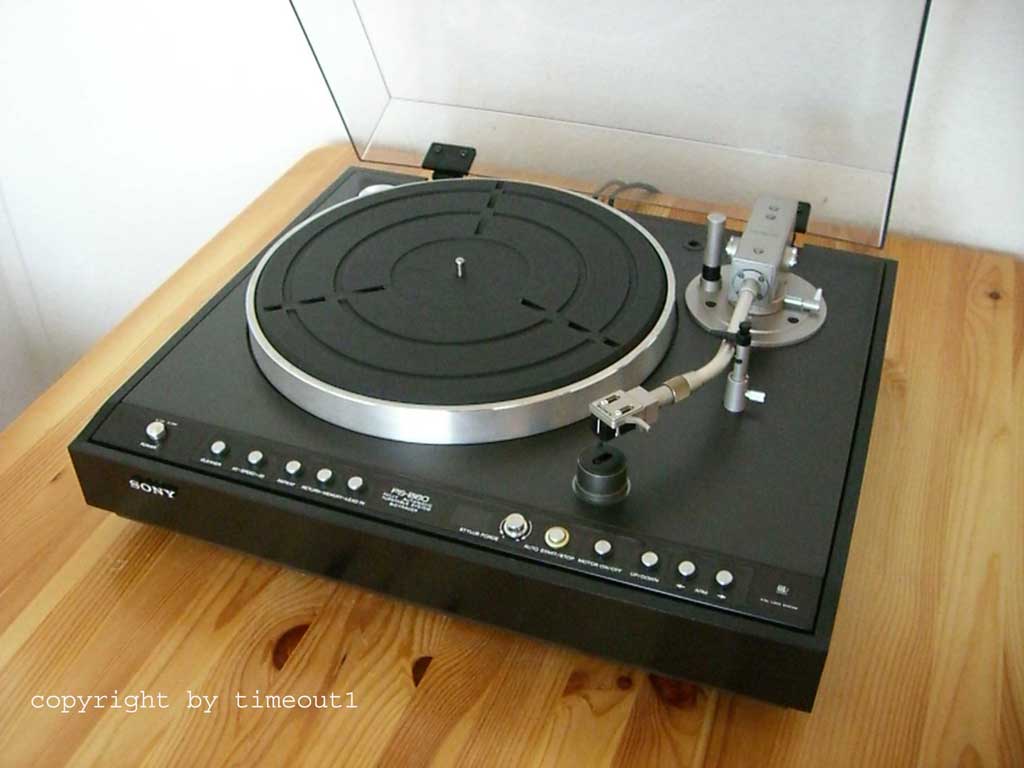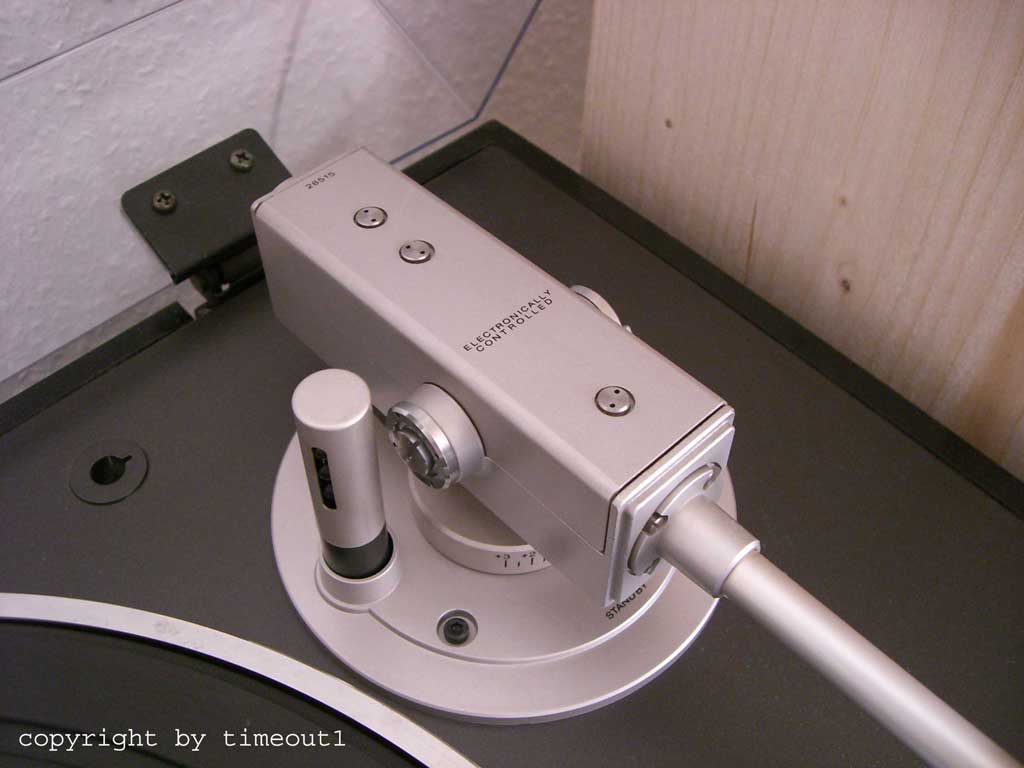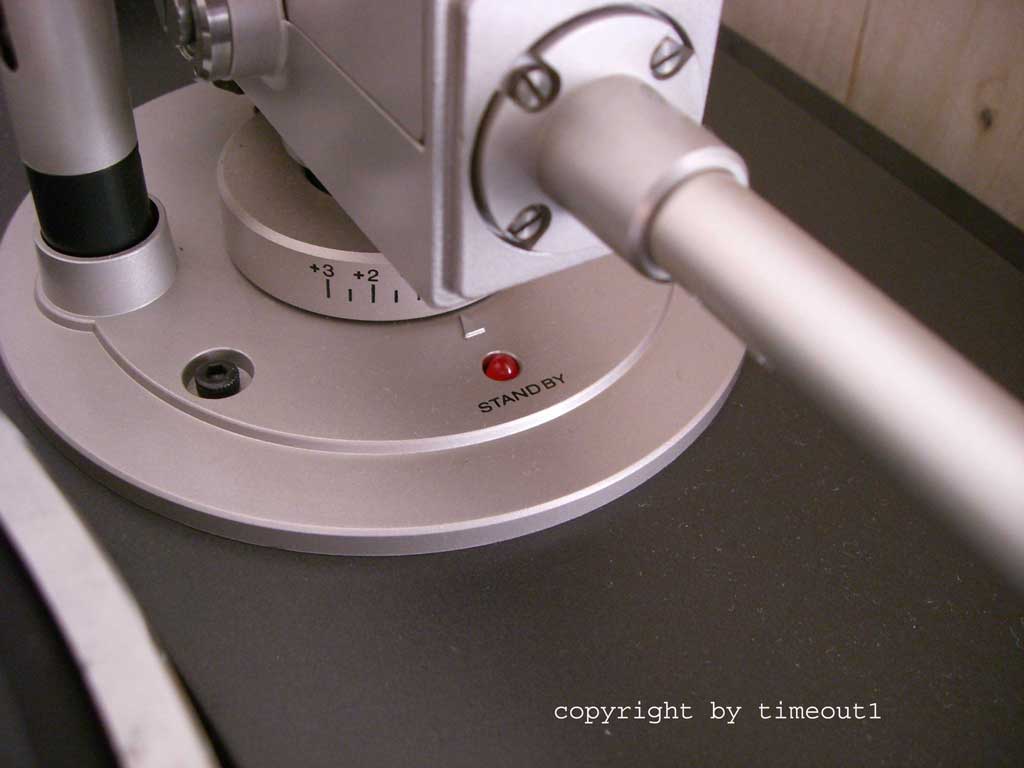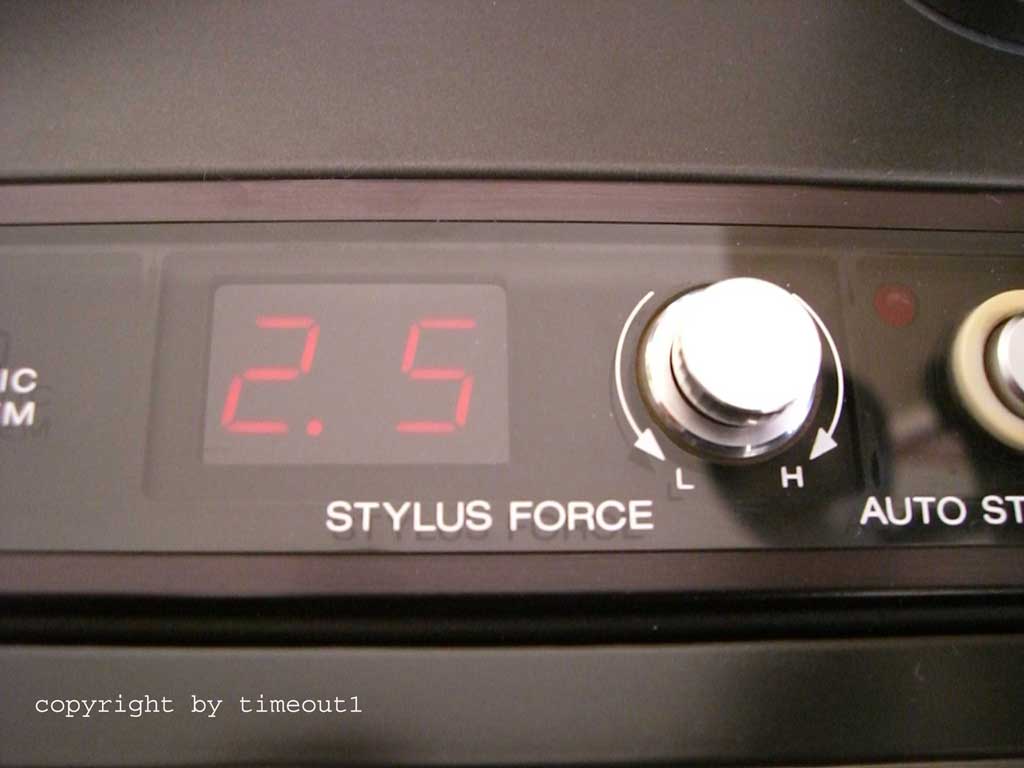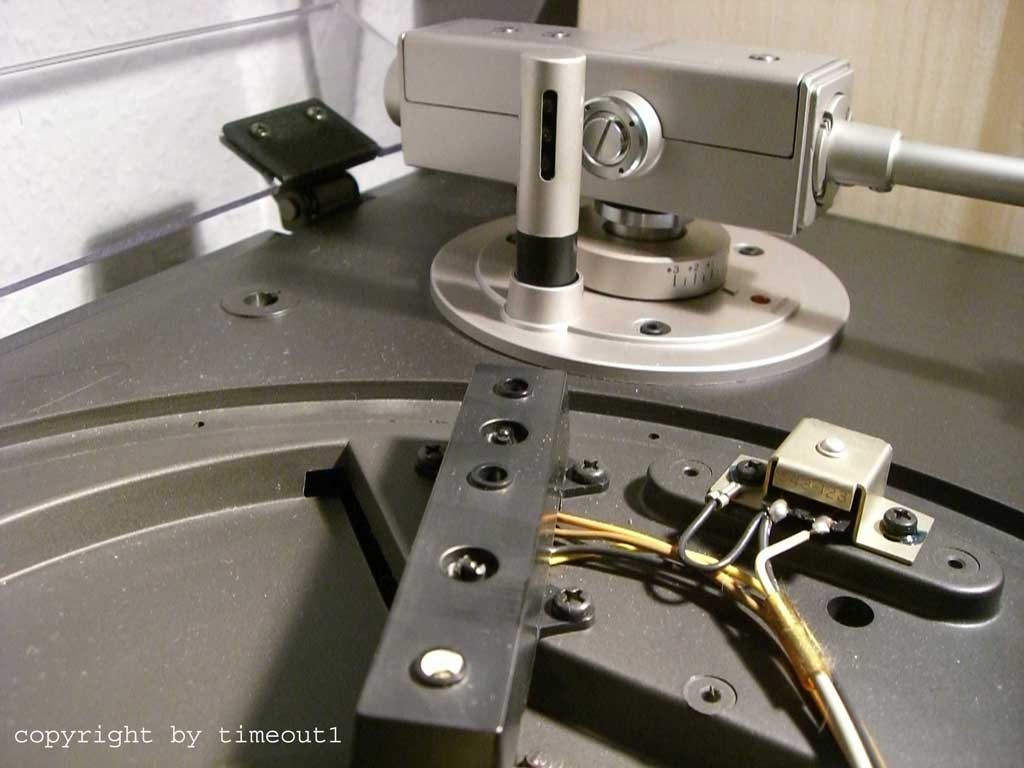Difference between revisions of "Sony PS-B 80"
| (13 intermediate revisions by 3 users not shown) | |||
| Line 1: | Line 1: | ||
__NOTOC__ | __NOTOC__ | ||
| − | == | + | == Data == |
| − | {{ | + | {{navigation}} |
| − | |||
| − | |||
| − | |||
| − | |||
| − | |||
| − | |||
| − | |||
| − | |||
| − | |||
| − | |||
| + | '''General''' | ||
| + | * Manufacturer: [[Sony]] | ||
| + | * Model: PS-B80 | ||
| + | * Years of manufacture: 1978 - 1982 | ||
| + | * Made in: Japan | ||
| + | * Color: silver, rosewood | ||
| + | * Power consumption: 29 W | ||
| + | * Dimensions: 500 x 175 x 430 mm (W x H x D) | ||
| + | * Weight: approx. 15.0 kg net | ||
| + | * Original price (without scanning system): 3'200 DM | ||
| − | |||
| − | |||
| − | |||
| + | '''Connections''' | ||
| + | * Outputs: Cinch [gold plated]. | ||
| − | ''' | + | '''Technical Data''' |
| − | * | + | * Drive: direct |
| − | * | + | * control system: magnetic disk servo control system with quartz reference |
| − | * Motor: Linear-BNL ( | + | * Motor: Linear-BNL (brushless and slotless) |
| − | * | + | * Speed: 33 1/3 and 45 upm |
| − | * | + | * Acceleration time: 1/4 revolution at 33 1/3 upm |
| − | * | + | * Synchronous speed variation: ± 0.04%, evaluated according to DIN |
| − | * | + | * Rumble noise ratio: 78 dB DIN-B |
| − | * | + | * Turntable: 320 mm Ø, aluminium |
| + | * Operating mode: fully automatic, can also be operated manually | ||
* Pitch: - | * Pitch: - | ||
| − | * | + | * Tonearm: Biotracer |
| − | ''' | + | '''Special Features''' |
| − | * 4- | + | * 4-bit CPU (one-chip microcomputer) MB8841 |
| − | * | + | * Fully electronic Biotracer tone arm |
| − | * | + | * Feedback system for suppression of low-frequency resonances |
| − | * | + | * Automatic adjustment of tonearm balance |
| − | * | + | * Automatic anti-skating compensation |
| − | * | + | * Electronic control and display of the tracking force on the front panel |
| − | * | + | * Fully automatic, sensor-controlled operation |
| − | * | + | * Electronic tonearm lift operated from the front panel |
| − | * | + | * Fast repetition, repetition of certain parts (memory), tolerance range of the programmed touchdown point ± 0.5 mm |
| − | * | + | * Automatic adjustment to all record formats with safety automatic for tonearm |
| − | * Linear BNL | + | * Linear BNL motor (reaches nominal speed after only a quarter turn (33 rpm)) |
| − | * Repeat | + | * Repeat function, works as a counter (up to 15 repeats possible) |
| − | * | + | * pickup mute function when lifting the tonearm |
| − | * | + | * Cueing possible by separate control of platter and tonearm |
| − | * | + | * Automatic needle cleaning |
| − | * | + | * Short-stroke keys for operation when the hood is closed |
| − | * | + | * Balance weight to adjust the arm to heavier cartridges (e.g.: [[Sony XL-55 PRO]]) |
| − | * | + | * Cast housing made of low-resonance SBMC (Sony Bulk Mold Compound) |
| − | * | + | * Height-adjustable gel-filled shock-absorbing feet |
| − | * | + | * Adjustment template for the adjustment of the overhang on the back of the turntable support |
| − | == | + | == Remarks == |
| − | + | Turntables with electronically controlled tonearms existed before and after the PS-B80, but none, perhaps apart from the [[Sony PS-X 800]], had such an elaborate and consistent implementation. For example, it was the first to use a truly automatic (electronic) anti-skating system. To calculate the necessary compensation force, not only the preset tracking force (also electronically controlled) is used, but sensors also provide values about position and angular velocity of the tonearm! | |
| − | Sony | + | Another revolutionary feature is the electronic damping of the tonearm in vertical and horizontal direction to suppress low-frequency vibrations. This also leads to a remarkable insensitivity to shocks and/or vibrations. |
| + | Where there is a lot of light, there is also a lot of shadow. In view of the enormous complexity, some feared an increased susceptibility to faults, and indeed, after more than 30 years, some of the devices have problems with the biotracer arm. But as long as the central control chip is still "alive", a repair is possible. There are no original spare parts any more, but you can use identical parts from current production. Further information can be found in the Hifi-Forum. | ||
| + | Whether the PS-B80 was only meant as a technology demonstrator must remain open, in any case it got soon a more reliable, but also simpler and thus cheaper brother at the side, the [[Sony PS-X 75]]. | ||
| + | Nowadays, the B80 rarely appears in stores, especially in working condition. The price level in the commercial online trade is above the new price (converted), in the online auction trade significantly below, although the prices are also constantly rising here and the purchase is associated with the usual risks. | ||
| − | |||
| − | + | By the way, Sony explained the name "Biotracer" as follows: "A microcomputer is built into the PS-B80 which acts as the "brain" of the tonearm and allows such a variety of operations that the tonearm's capabilities seem to resemble those of a human arm. For this reason, Sony has given this tonearm the name "Biotracer"!" | |
| − | == | + | == Pictures == |
| − | [[ | + | [[Image:Sony-PS-B80_08.jpg]] |
| − | [[ | + | [[Image:Sony-PS-B80_04.jpg]] |
| − | [[ | + | [[Image:Sony-PS-B80_05.jpg]] |
| − | [[ | + | [[Image:Sony-PS-B80_03.jpg]] |
| − | [[ | + | [[Image:Sony-PS-B80_02.jpg]] |
| − | [[ | + | [[Image:Sony-PS-B80_07.jpg]] |
| − | [[ | + | [[Image:Sony-PS-B80_01.jpg]] |
| − | |||
| − | Audio 1/1980 Test Sony | + | [[Pictures show unit with frame painted black afterward]] |
| + | |||
| + | |||
| + | == Reports == | ||
| + | |||
| + | Audio 1/1980 Test Sony turntable: "The thinking tonearm". | ||
| + | |||
| + | HiFi-Stereofonie 9/1979 "Tonearm with memory and feeling" on the Sony turntable PS-B80 | ||
| − | |||
== Videos == | == Videos == | ||
| − | + | http://www.youtube.com/watch?v=lntbqFG7_Ko | |
| + | == Links == | ||
| + | * Record player PS-B80: [http://www.thevintageknob.org/sony-PS-B80.html] | ||
| − | + | * HiFi Studio [https://web.archive.org/web/20120513212823/http://www.hifi-studio.de/hifi-klassiker/plattenspieler.htm] | |
| − | * | + | |
| − | + | * HIFI Forum [http://www.hifi-forum.de] | |
| − | * HIFI | ||
| − | [[ | + | [[Category:Turntables]] |
Latest revision as of 04:25, 31 January 2019
Data[edit]
General
- Manufacturer: Sony
- Model: PS-B80
- Years of manufacture: 1978 - 1982
- Made in: Japan
- Color: silver, rosewood
- Power consumption: 29 W
- Dimensions: 500 x 175 x 430 mm (W x H x D)
- Weight: approx. 15.0 kg net
- Original price (without scanning system): 3'200 DM
Connections
- Outputs: Cinch [gold plated].
Technical Data
- Drive: direct
- control system: magnetic disk servo control system with quartz reference
- Motor: Linear-BNL (brushless and slotless)
- Speed: 33 1/3 and 45 upm
- Acceleration time: 1/4 revolution at 33 1/3 upm
- Synchronous speed variation: ± 0.04%, evaluated according to DIN
- Rumble noise ratio: 78 dB DIN-B
- Turntable: 320 mm Ø, aluminium
- Operating mode: fully automatic, can also be operated manually
- Pitch: -
- Tonearm: Biotracer
Special Features
- 4-bit CPU (one-chip microcomputer) MB8841
- Fully electronic Biotracer tone arm
- Feedback system for suppression of low-frequency resonances
- Automatic adjustment of tonearm balance
- Automatic anti-skating compensation
- Electronic control and display of the tracking force on the front panel
- Fully automatic, sensor-controlled operation
- Electronic tonearm lift operated from the front panel
- Fast repetition, repetition of certain parts (memory), tolerance range of the programmed touchdown point ± 0.5 mm
- Automatic adjustment to all record formats with safety automatic for tonearm
- Linear BNL motor (reaches nominal speed after only a quarter turn (33 rpm))
- Repeat function, works as a counter (up to 15 repeats possible)
- pickup mute function when lifting the tonearm
- Cueing possible by separate control of platter and tonearm
- Automatic needle cleaning
- Short-stroke keys for operation when the hood is closed
- Balance weight to adjust the arm to heavier cartridges (e.g.: Sony XL-55 PRO)
- Cast housing made of low-resonance SBMC (Sony Bulk Mold Compound)
- Height-adjustable gel-filled shock-absorbing feet
- Adjustment template for the adjustment of the overhang on the back of the turntable support
Remarks[edit]
Turntables with electronically controlled tonearms existed before and after the PS-B80, but none, perhaps apart from the Sony PS-X 800, had such an elaborate and consistent implementation. For example, it was the first to use a truly automatic (electronic) anti-skating system. To calculate the necessary compensation force, not only the preset tracking force (also electronically controlled) is used, but sensors also provide values about position and angular velocity of the tonearm! Another revolutionary feature is the electronic damping of the tonearm in vertical and horizontal direction to suppress low-frequency vibrations. This also leads to a remarkable insensitivity to shocks and/or vibrations. Where there is a lot of light, there is also a lot of shadow. In view of the enormous complexity, some feared an increased susceptibility to faults, and indeed, after more than 30 years, some of the devices have problems with the biotracer arm. But as long as the central control chip is still "alive", a repair is possible. There are no original spare parts any more, but you can use identical parts from current production. Further information can be found in the Hifi-Forum. Whether the PS-B80 was only meant as a technology demonstrator must remain open, in any case it got soon a more reliable, but also simpler and thus cheaper brother at the side, the Sony PS-X 75. Nowadays, the B80 rarely appears in stores, especially in working condition. The price level in the commercial online trade is above the new price (converted), in the online auction trade significantly below, although the prices are also constantly rising here and the purchase is associated with the usual risks.
By the way, Sony explained the name "Biotracer" as follows: "A microcomputer is built into the PS-B80 which acts as the "brain" of the tonearm and allows such a variety of operations that the tonearm's capabilities seem to resemble those of a human arm. For this reason, Sony has given this tonearm the name "Biotracer"!"
Pictures[edit]
Pictures show unit with frame painted black afterward
Reports[edit]
Audio 1/1980 Test Sony turntable: "The thinking tonearm".
HiFi-Stereofonie 9/1979 "Tonearm with memory and feeling" on the Sony turntable PS-B80
Videos[edit]
http://www.youtube.com/watch?v=lntbqFG7_Ko
Links[edit]
- Record player PS-B80: [1]
- HiFi Studio [2]
- HIFI Forum [3]
